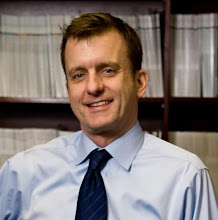A New York Times blog post and its accompanying article today make some interesting points about the attitudes of doctors on practicing medicine in today's health system, including their feelings about the coming changes in health reform. But the blog post and article miss perhaps the most interesting point of all: the kind of medicine a doctor practices may have the strongest influence of all on their attitudes about the practice of medicine.
In the US, a whopping 75% of physicians are specialists while only 25% practice primary care. Why this imbalance? I'm not sure how many people know this: in the US, a primary care doc makes about $140K to start and a radiologist makes about $340K to start. Medical school graduates in the US flock to higher paying specialties and there is no doubt that projected income is a major factor in their decisions. In 2009, just 10% of Harvard Medical School graduating class of 165 went into primary care. By contrast, Tufts graduated 17% and UMass graduated 39% into primary care. These are scary numbers, especially those at institutions that are supposed to be on the leading edge of medical education.
Which kind of doctor is happier with the current system and the prospects of health reform? This question has to be explored, and the answers may not be what you'd expect. At least on the changes coming in health reform, my hunch is that many primary care doctors are more likely than their specialist counterparts to be supportive. Primary care doctors should especially like increases in their authority to control global payment under accountable care organizations and medical home intiatives. Health reform, if done right, could reduce the gap between primary care pay and specialist pay.
Changes like these will probably make a radiologist seethe, but they could cause a primary care doctor to celebrate. Primary care doctors may have legitimate gripes today, but they could soon see changes they will like.
Monday, May 3, 2010
Subscribe to:
Post Comments (Atom)

No comments:
Post a Comment